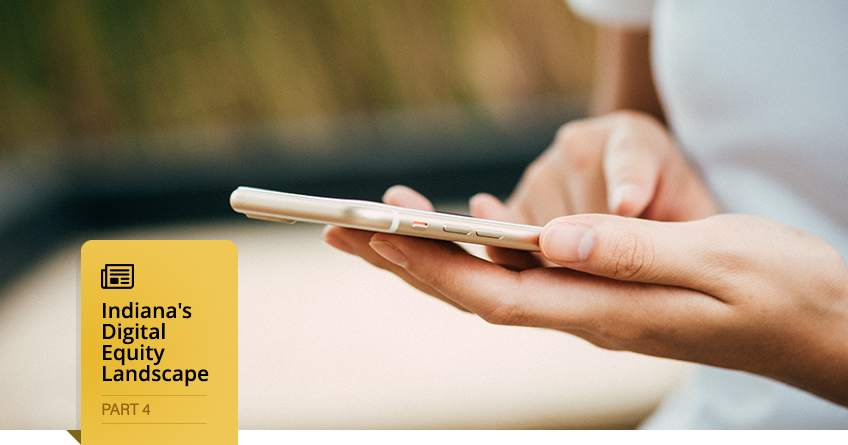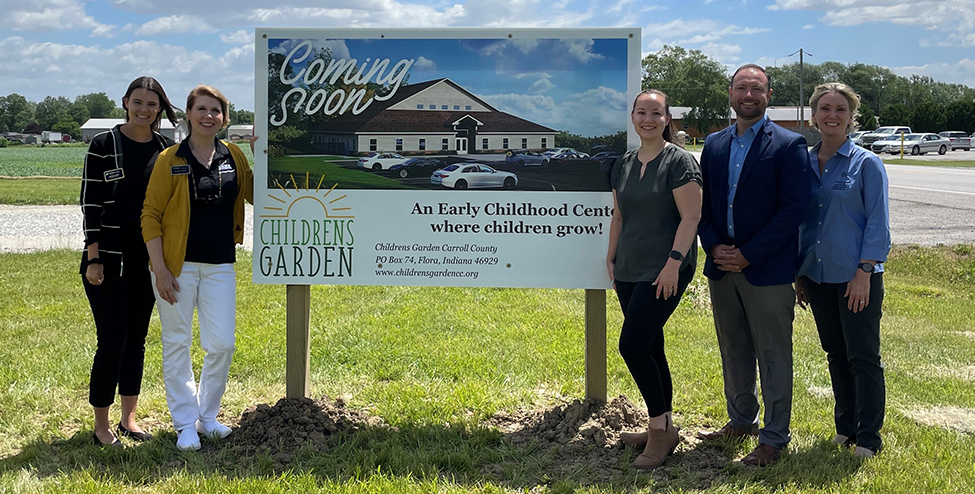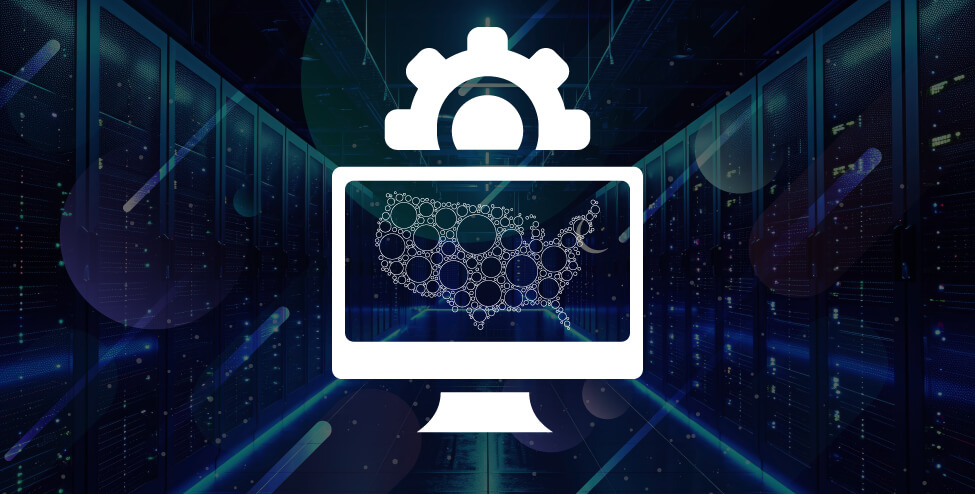A Closer Look at Indiana’s Digital Equity: Mobile-Only

This is the fourth post of our “Indiana’s Digital Equity Landscape” series. The previous posts looked at paid home internet among different groups, reasons why survey respondents did not pay for home internet, and ownership/reliability of home internet and devices.
Today we look at survey respondents who only relied on a smartphone. Also known as “mobile-only”, this group is important to keep in mind when it comes to digital equity. Research has found that relying solely on smartphones undermines the potential of digital technology and applications. One reason may be limited data plans. With only so much data available per month, users need to make decisions as to what they use their data on.
Another reason is the smaller screens. Although more and more digital content is mobile-friendly, smaller screens can be an issue. For example, try typing a high school term paper on your phone. It is not impossible, but it does require time and effort not needed when using a desktop or laptop.
Figure 1 shows that 9.1% of survey respondents only had smartphone devices, compared to 86.4% with smartphones and at least one other device. Less than 5% of respondents either did not have devices or had devices other than smartphones. From our first post in this series, recall that 12.4% of all survey respondents did not pay for home internet over the past 12 months. This share is about three times higher or 37% among smartphone only respondents.
Who are these smartphone only users? Figure 2 breaks down the smartphone only survey respondents by specific demographic characteristics. Majority of smartphone only survey respondents were urban, less educated, lower income, younger, and white non-Hispanic.
Furthermore, as Figures 3-4 show, the share of these smartphone only respondents was on average lower compared to the overall sample when it comes to benefits of using the internet and confidence in specific online tasks. This supports previous research that found that smartphone only users do not leverage the internet to its fullest extent. For example, in Figure 3, the smallest difference between overall and smartphone only respondents was where the internet somewhat or greatly increased their ability to access and use healthcare services. However, the largest difference between these groups was where the internet somewhat or greatly increased their ability to do day-to-day tasks more quickly.
Likewise, Figure 4 shows that the smallest difference between overall and smartphone only respondents was regarding creating a resume. On the other hand, the largest difference on feeling very or extremely confident doing online tasks was when it came to accessing or applying for government services.
Granted, some of these increased abilities due to internet use or online tasks may not be as important to some smartphone only respondents. Perhaps some have no need for online banking as overall respondents do. Same for accessing and using government services. Nonetheless, not accessing these services may affect other abilities that can impact their quality of life.
In the next post in our “Indiana’s Digital Equity Landscape” series, we explore support networks and whom do Indiana survey respondents turn to when needing internet and/or device help.

Roberto Gallardo is the Vice President for Engagement and an Associate Professor in the Agricultural Economics Department. He holds an electronics engineering undergraduate degree, a... read more




